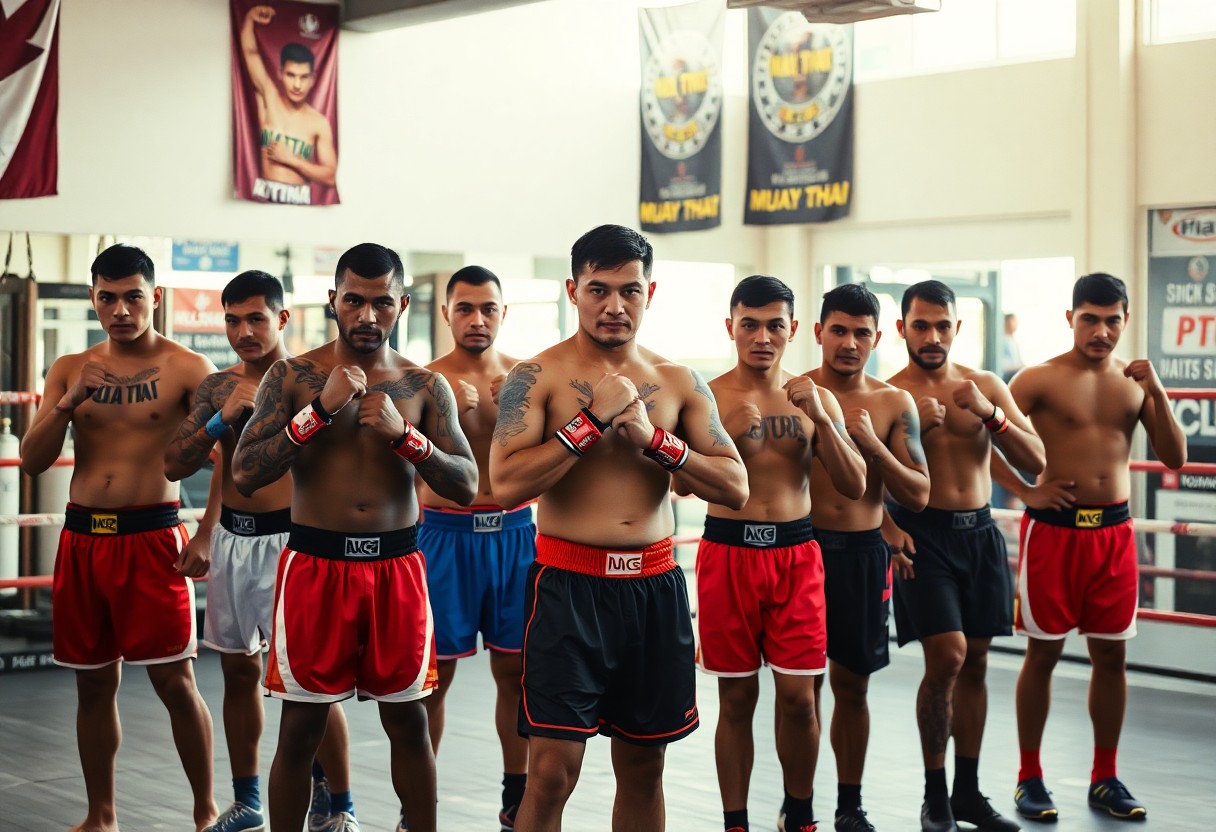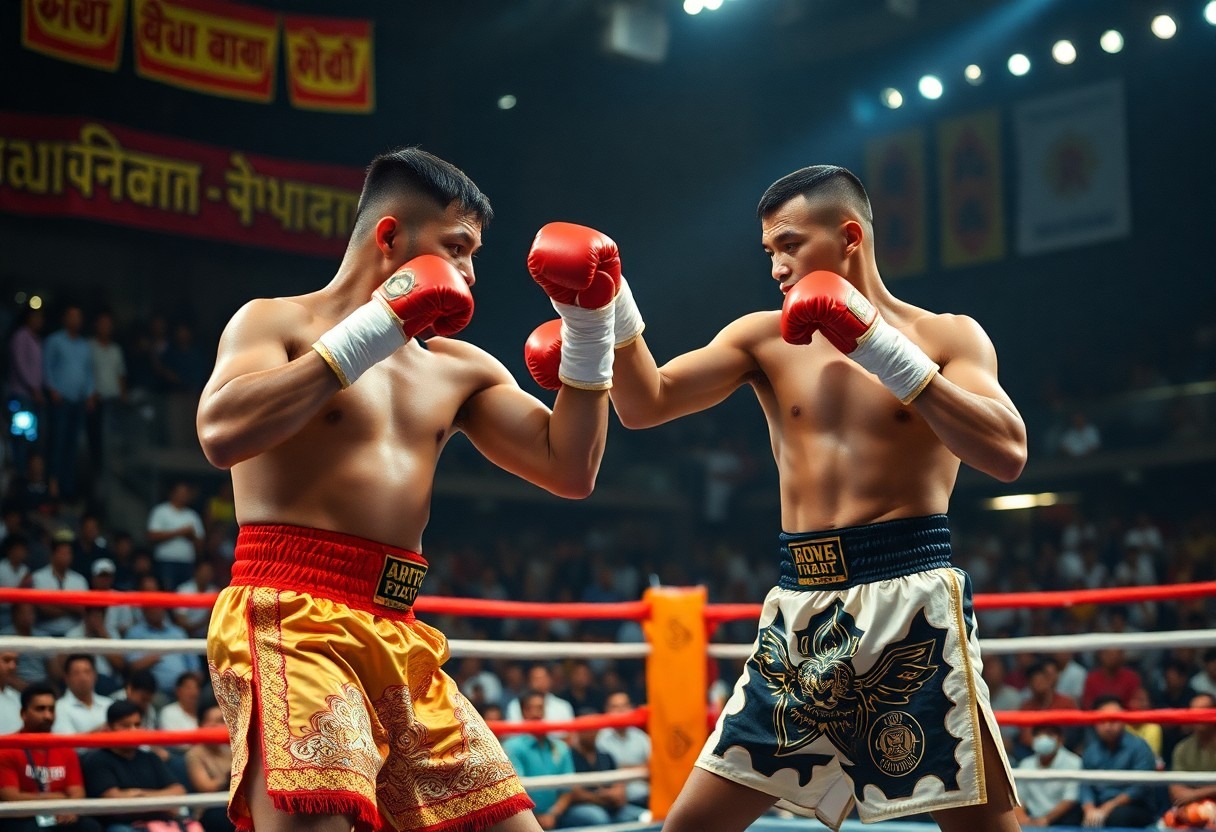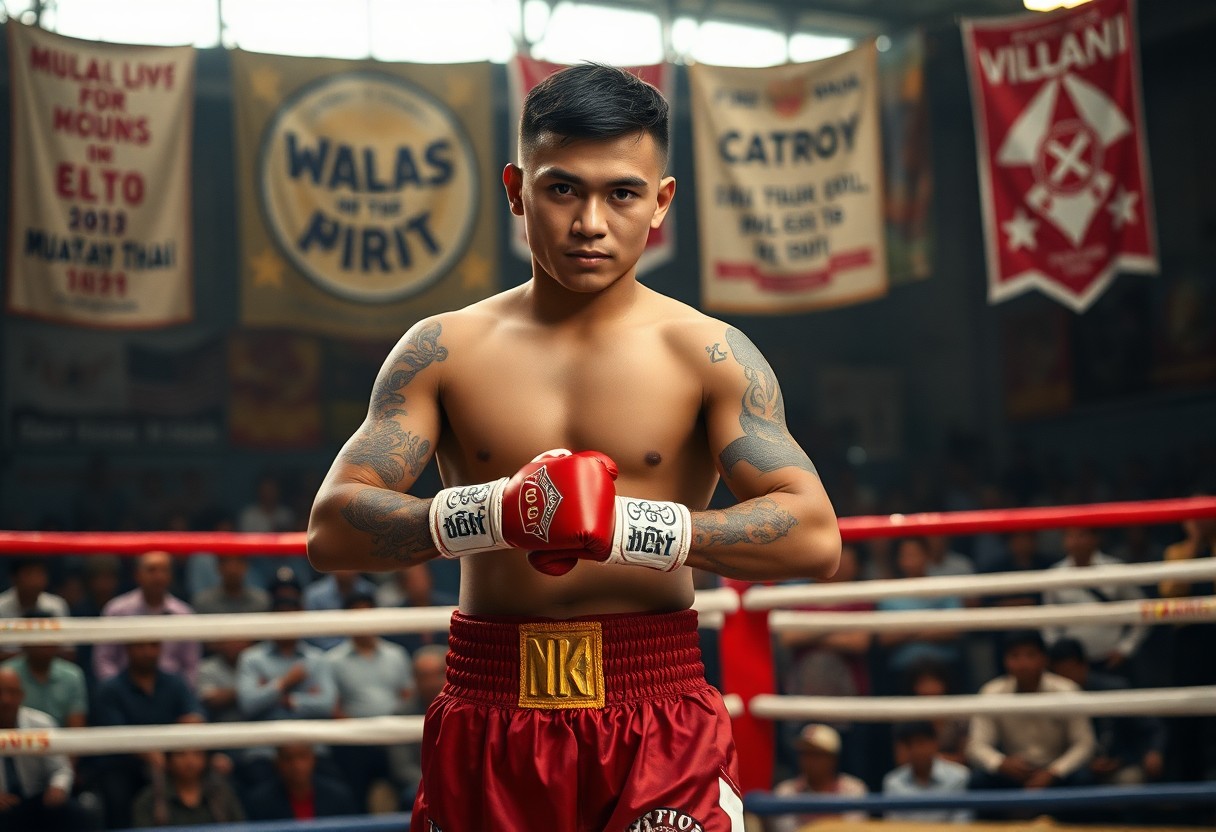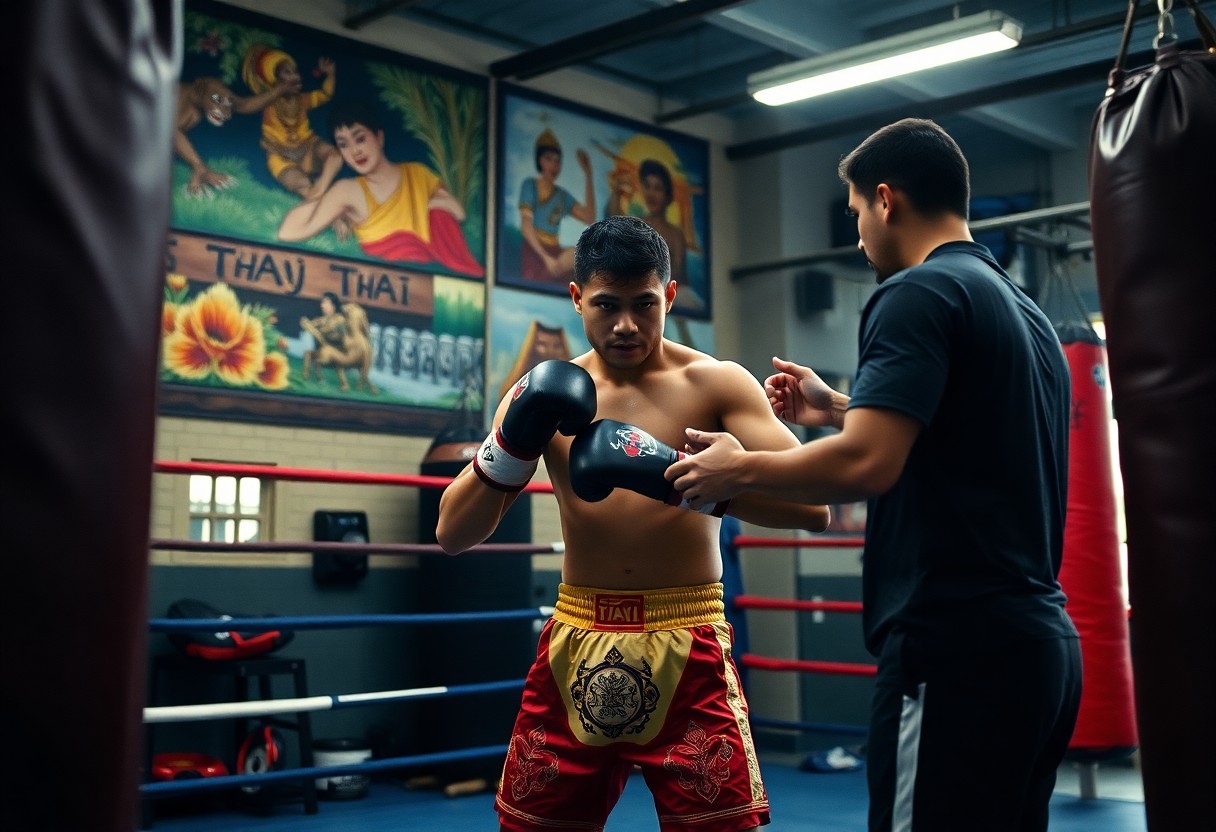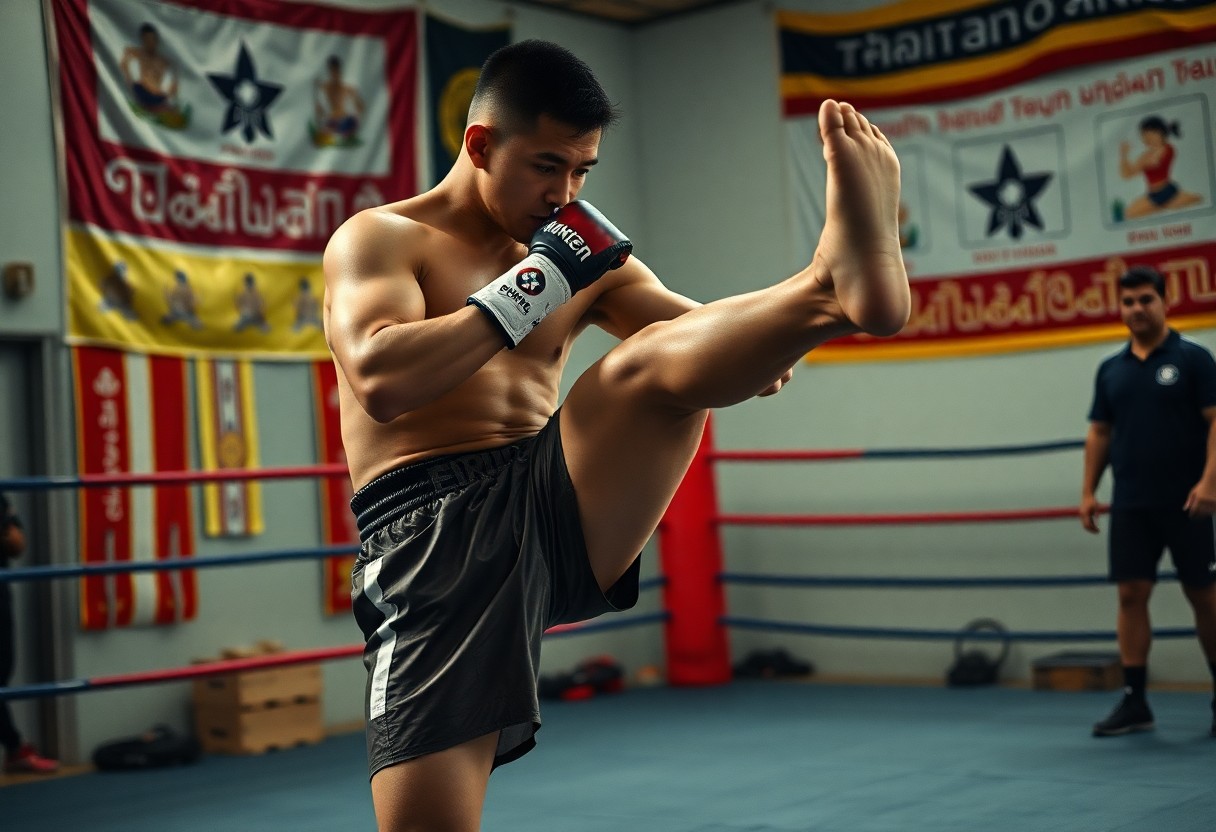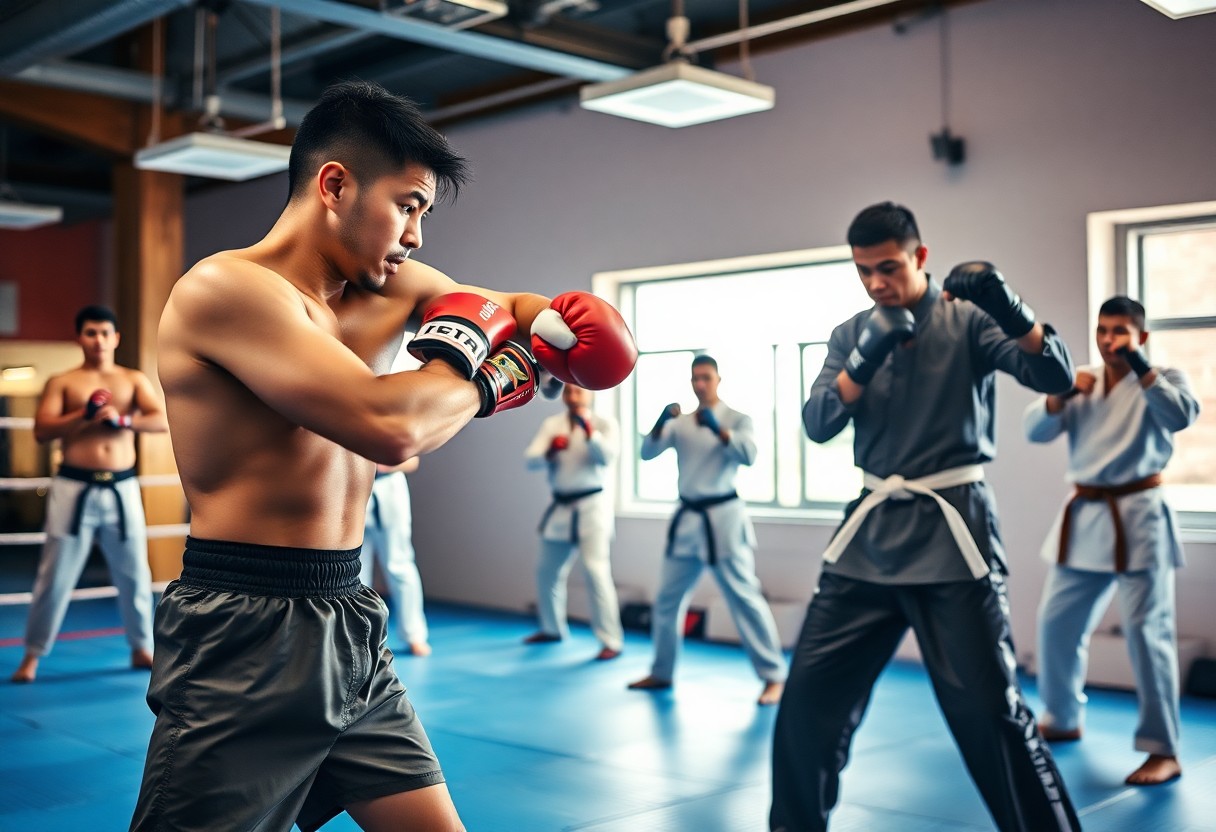
Techniques from Muay Thai have become foundational elements in various martial arts disciplines around the globe. As you explore the world of combat sports, it’s vital to recognize how the striking prowess, clinching methods, and overall fighting philosophy of Muay Thai have permeated other styles. From mixed martial arts to traditional striking arts, these techniques are widely adopted by fighters seeking to enhance their performance. This post will explore into the specific influences of Muay Thai and the ways in which its techniques have enriched combat sports worldwide.
Historical Context of Muay Thai
Before the modern era, Muay Thai developed out of the need for self-defense in ancient Thailand, influenced by various combat techniques stemming from the country’s rich martial traditions. This fighting style not only reflects the culture and heritage of the Thai people but also stands as a testament to the evolution of hand-to-hand combat as a viable form of both physical and mental discipline.
Origins of Muay Thai
At its inception, Muay Thai traces its roots back to the military training of the Siamese army, where techniques were practiced to prepare soldiers for hand-to-hand combat. This art form, originally known as “Muay Boran,” incorporated strikes, joint locks, and grappling, forming the foundation of the sport you see today.
Evolution and Global Spread
Behind the scenes, Muay Thai underwent significant changes as it transitioned from a battlefield skill to a competitive sport. As it gained popularity, the sport adapted to incorporate strict rules and regulations, allowing it to flourish in local and international arenas.
To fully appreciate the evolution and global spread of Muay Thai, consider its rise during the 20th century when it transitioned from traditional fighting techniques to a recognized sport with a formalized structure. This transformation allowed you and other martial arts enthusiasts to experience its dynamic techniques through international competitions and training facilities, creating a unique blend of tradition and modernity. The synergy between Muay Thai and other martial arts further enhances your practice, illustrating its influential role in shaping diverse fighting styles around the world.
Core Techniques of Muay Thai
Now that you understand the foundations of Muay Thai, it’s vital to explore its core techniques that have influenced various martial arts worldwide. These techniques encompass powerful strikes, unparalleled clinch work, and a unique approach to rhythm and timing, each contributing to the versatility and effectiveness of this martial discipline. As you dive deeper into Muay Thai, you will encounter these core techniques that are designed to optimize your fighting skill set.
Striking Techniques
One of the hallmarks of Muay Thai is its striking techniques, which include punches, kicks, elbows, and knees — collectively termed “the art of eight limbs.” As you incorporate these techniques into your training, you will find that each strike can be utilized effectively at various ranges, enhancing your ability to deliver powerful attacks and maintain control in a fight.
Clinch and Grappling
For those who appreciate the strategic elements of combat, Muay Thai’s clinch and grappling techniques provide a unique skill set that distinguishes it from other martial arts. The clinch allows you to tie up your opponent, creating opportunities for knee strikes or throws, while maintaining a dominant position in close quarters.
And as you further your understanding of the clinch, you will learn that it is not merely a position for resting or stalling; it’s a dynamic exchange where leverage and timing play significant roles. Perfecting your clinch technique enables you to execute devastating knee strikes and maintain control, making it a formidable aspect of Muay Thai that you can incorporate into your martial arts repertoire. Embrace the intricacies of the clinch and watch your overall fighting effectiveness soar.
Influence on Other Striking Arts
It is undeniable that Muay Thai has profoundly shaped various striking disciplines around the globe. The techniques, strategies, and philosophies intrinsic to Muay Thai have found their way into numerous martial arts, enhancing the effectiveness and depth of these fighting styles. You can see its influence not only in the ring but also in the evolution of modern combat sports, making your understanding of Muay Thai an imperative part of a broader striking skill set.
Kickboxing Adaptations
Other martial arts, particularly kickboxing, have integrated key elements from Muay Thai, such as the powerful knee strikes and elbow techniques. You may notice that many kickboxers now incorporate these techniques to enhance their striking arsenal, creating a more dynamic fighting style. The rhythmic footwork and defensive tactics of Muay Thai also contribute greatly to the evolution of kickboxing, making the two disciplines increasingly interconnected.
Incorporation in MMA
Beside kickboxing, mixed martial arts (MMA) has embraced various aspects of Muay Thai to elevate striking precision and versatility. Fighters regularly utilize Muay Thai’s clinch work and devastating strikes in their arsenal, allowing for seamless transitions between standing and ground techniques.
Incorporation of Muay Thai in MMA enhances your striking game significantly. You will find that the clinch work utilized in Muay Thai helps you maintain control over your opponent and create openings for knees and elbows, providing an edge in close-range combat. Many successful MMA fighters hail from Muay Thai backgrounds, showcasing how these striking techniques can complement grappling arts. By understanding and integrating Muay Thai principles, you can elevate your performance and adaptability within the octagon.
Borrowed Techniques in Other Martial Arts
Your understanding of martial arts can be enriched by recognizing how techniques from Muay Thai have influenced various fighting styles around the globe. Many martial arts practitioners incorporate striking techniques, footwork, and clinching methods from Muay Thai, often enhancing their skill set and overall effectiveness in combat situations. By adopting these techniques, fighters gain a competitive edge and can adapt to diverse fighting scenarios, showing the global impact of Muay Thai beyond its traditional roots.
Taekwondo and Muay Thai
Thai boxing has notably informed the striking components of Taekwondo, particularly with its emphasis on powerful kicks and effective use of knees and elbows. Practitioners of Taekwondo have drawn inspiration from the Muay Thai stance and techniques, integrating them to augment their own repertoire. This collaboration enhances both styles, enabling fighters to develop a more dynamic approach to striking in the ring or during sparring sessions.
Brazilian Jiu-Jitsu and Stand-Up Fighting
An understanding of Brazilian Jiu-Jitsu (BJJ) is incomplete without acknowledging the significance of stand-up fighting techniques borrowed from Muay Thai. The fusion of these two disciplines allows practitioners to transition between striking and grappling seamlessly, creating a more fluid combat style. BJJ artists often find that incorporating Muay Thai clinch and striking techniques helps them control their opponents before taking them to the ground.
Hence, Brazilian Jiu-Jitsu practitioners can greatly benefit from adopting Muay Thai stand-up fighting techniques. The ability to deliver effective strikes while maintaining a solid clinch opens new avenues for control and entry into grappling positions. Integrating Muay Thai’s offensive capabilities into your BJJ practice not only improves your striking proficiency but also enhances your overall game by allowing you to dictate the pace and flow of fights, ensuring a well-rounded skill set. This blend of arts represents a modern evolution of martial training that respects traditional techniques while adapting to contemporary fighting needs.
The Role of Training Methodologies
Many martial artists have adopted Muay Thai’s training methodologies to enhance their skills. The emphasis on rigorous conditioning and practical sparring sessions not only improves physical fitness but also hones effective combat techniques. You will find that these methodologies foster resilience and adaptability, traits imperative for any fighter. By integrating these proven methods into your training regimen, you can achieve notable improvements in your overall performance, regardless of your primary martial art.
Conditioning and Sparring
Between structured conditioning workouts and intense sparring sessions, Muay Thai practitioners build the stamina and skill necessary for effective striking and defense. You’ll appreciate that the focus on high-intensity drills and partner work allows you to experience real fight scenarios, sharpening your reflexes and timing. This dual approach promotes both physical and mental readiness, preparing you to face various challenges in the ring.
Mental Aspects and Strategy
Around the ring, mental strength and strategy are often as significant as physical prowess. You can see how seasoned Muay Thai fighters develop tactical skills alongside their striking techniques, enabling them to anticipate and counter their opponent’s moves. This blend of mental agility and physical execution creates a balanced fighter capable of adapting swiftly during bouts.
Training your mind to be strategic can enhance your performance as much as physical conditioning. You will benefit from analyzing your opponents’ styles and learning how to exploit their weaknesses. Visualization techniques can help you mentally rehearse fights, preparing you to react instinctively during competition. By combining mental preparation with technical skill, your overall strategy becomes more sophisticated, giving you an edge in any match.
The Future of Muay Thai’s Influence
After years of evolving, the influence of Muay Thai will continue to shape martial arts worldwide. As fighters seek diverse training methods, the incorporation of Muay Thai techniques will expand, enriching their skill sets. This adaptability ensures that the art form remains relevant while lending its profound impact to practitioners across various disciplines.
Global Collaborations and Cross-Training
Along the way, the rise of global collaborations has fostered opportunities for fighters to engage in cross-training, blending Muay Thai with other martial arts. You’ll find gyms around the world highlighting shared techniques, allowing martial artists to enhance their skills while cultivating a deeper understanding of body mechanics and strategy.
Preservation of Traditional Techniques
Collaborations in the martial arts community also emphasize the preservation of traditional techniques that give Muay Thai its unique character. By exploring new training methods while honoring the core principles of the sport, you can bridge the gap between modern adaptations and classical techniques, ensuring that Muay Thai’s rich heritage continues to influence future generations.
A healthy balance between innovation and tradition is vital for sustaining Muay Thai’s legacy. As you engage with fellow practitioners, you may notice a renewed emphasis on maintaining authentic techniques and rituals. This commitment to tradition not only fosters respect for the history of the sport but also enriches your understanding of its origins and values, allowing you to cultivate a well-rounded martial arts journey.
Final Words
Summing up, it’s clear that Muay Thai’s influence extends far beyond its native borders, enriching the techniques and strategies of martial artists around the globe. As you research deeper into your own training, you may find valuable insights and skill sets that have been inspired by this striking art form. Embracing these techniques not only enhances your fighting repertoire but also pays homage to the cultural heritage that shapes martial arts worldwide, allowing you to become a more versatile and effective fighter.

